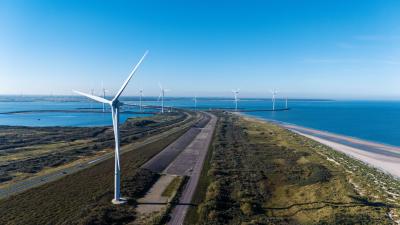What is nature-positive engineering
This page is approximately a 3 minute read
This page was published on

Modern development has historically prioritised human advancement at the expense of the environment; 75% of the land-based environment and about 66% of the marine environment have been significantly altered by human actions.30 Infrastructure projects often alter landforms, disrupt hydrology, and fragment ecological connectivity, triggering cascading effects on ecosystems and communities.
Nature-Positive engineering (NPE) refers to engineering practices that protect, restore, and enhance natural systems, delivering measurable gains for nature alongside societal wellbeing and need
NPE challenges this paradigm by reframing nature as a critical ally and integral part of achieving human and planetary wellbeing. It is a systems-based practice that aims to deliver measurable gains for nature – protecting and restoring habitats, enhancing biodiversity, and strengthening ecosystem services. This approach recognises nature as infrastructure in its own right that provides essential functions such as water filtration, climate regulation, and coastal protection. Embedding nature positivity as a core engineering design objective, alongside safety, efficiency, and functionality, is key to ‘bending the curve’ of biodiversity loss.
While sustainability31 has long been part of the engineering discourse,32 a shift is needed from simply minimising environmental harm (‘doing less harm’) towards proactively protecting, restoring and enhancing ecosystems (‘doing more good’). NPE supports this evolution by promoting a deeper, more intentional integration of engineering expertise with ecological principles in decision-making.
NPE charts a path toward restoration and regeneration (see Figure 2). Every improvement matters, at every stage. Restoration and regeneration are not possible without first reducing harm, so sustainable practices that minimise or avoid environmental damage remain essential. But harm reduction alone is no longer sufficient. The urgency of the nature crisis requires all future engineering interventions to aspire to deliver measurable ecological gains. Responsibility for this transformation cannot rest with engineers alone; it requires a systemic shift in policies, regulatory frameworks, design standards, performance metrics, and risk assessments to align development with the needs of both people and the planet.33
We are not starting from scratch. A range of related concepts, approaches, and solutions already exist, and these should be integrated into the NPE implementation toolkit and leveraged to accelerate uptake. Rather than adding to an already crowded space, NPE seeks to unify and clarify, offering a universal framework and guiding principles applicable across all engineering contexts. It builds on and aligns with existing concepts, and is the engineering approach to implementing Nature-Positive Infrastructure, see Figure 3 below
Implementing NPE requires addressing all drivers of biodiversity loss and aligning multiple disciplines and approaches, such as environmental engineering, ecological design, circular economy, and climate mitigation and adaptation, around shared nature-positive goals. This demands interdisciplinary collaboration, bringing together engineers, ecologists, social scientists, economists, and other specialists, while fostering co-design with project developers, businesses, and local communities.
Embedding NPE across in the lifecycle
Nature-positivity should be a core principle in engineering decisions across the entire project lifecycle and value chain. This means identifying opportunities at every stage – planning and design to construction, operation, and decommissioning – to prioritise nature alongside societal and financial objectives. It encourages the use of a spectrum of context-specific strategies, approaches and solutions, including nature-based and hybrid solutions, aligned with performance requirements.
- 30
IPBES. (2019). Summary for policymakers of the global assessment report on biodiversity and ecosystem services of the Intergovernmental Science-Policy Platform on Biodiversity and Ecosystem Services. IPBES Secretariat. (Summary for policymakers of the global assessment report on biodiversity and ecosystem services)
- 31
Mang, P., & Reed, B. (2020). Regenerative development and design. In W. Leal Filho, A. M. Azul, L. Brandli, P. G. Özuyar, & T. Wall (Eds.), Responsible consumption and production (pp. 472–484). Springer. (Regenerative Development and Design | SpringerLink)
- 32
UNESCO. (2021). Engineering for sustainable development: Delivering on the Sustainable Development Goals. United Nations Educational, Scientific and Cultural Organization. (Engineering for sustainable development: delivering on the Sustainable Development Goals - UNESCO Digital Library)
- 33
United Nations Development Programme & BES-Net. (2024, May). Navigating towards a nature‑positive future: Strategic uptake of evidence towards tangible biodiversity solutions. (undp-besnet-navigating-towards-a-nature-positive-future-en.pdf)


